Abstract
Female rats were treated with several administration regimens of methylprednisolone, cobra venom anti-complementary factor, and cyclophosphamide in conjunction with polyvinyl sponge implantations. The effect of these drugs on host factors active against bacteria was evaluated with Staphylococcus aureus ATCC 25933, Escherichia coli K-12, and Pseudomonas aeruginosa CDC 7725. One of two implants in each animal was infected with 10(8) of one of the three bacteria, and bacterial and granulocyte content was determined in the infected and control sponges after 48 h. The single large dose of methylprednisolone decreased staphylococcal and E. coli clearance while promoting dissemination of P. aeruginosa. A low chronic dose of the steroid inhibited E. coli chemotaxis only. A higher dose of the steroid administered chronically interfered markedly with S. aureus and E. coli curtailment by the host while leading to enhanced dissemination of P. aeruginosa, accompanied by a precipitous decline in granulocytes. Results with cobra factor resembled the higher chronic dose of steroid enhancing, especially the dissemination of the pseudomonad and its anti-granulocytic propensity. Cyclophosphamide depression of granulocytes revealed the rat's ability to curtail the proliferation of particular S. aureus and E.coli strains even in the absence of leukocytes. This treatment resulted in the rapid spread of P. aeruginosa, leading to the death of some experimental animals. These experiments underline the versatility of this animal model in the study of host and microbial factors influential in infectious disease.
Full text
PDF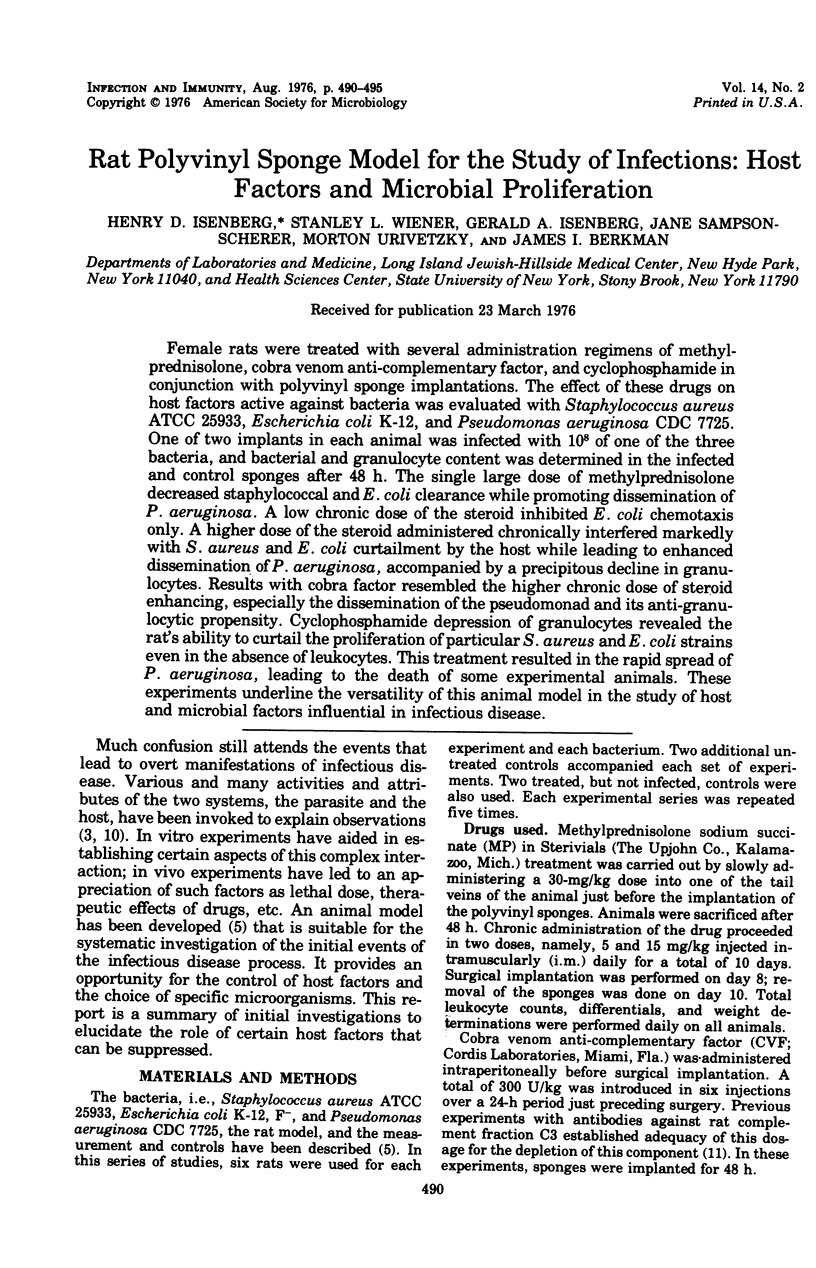
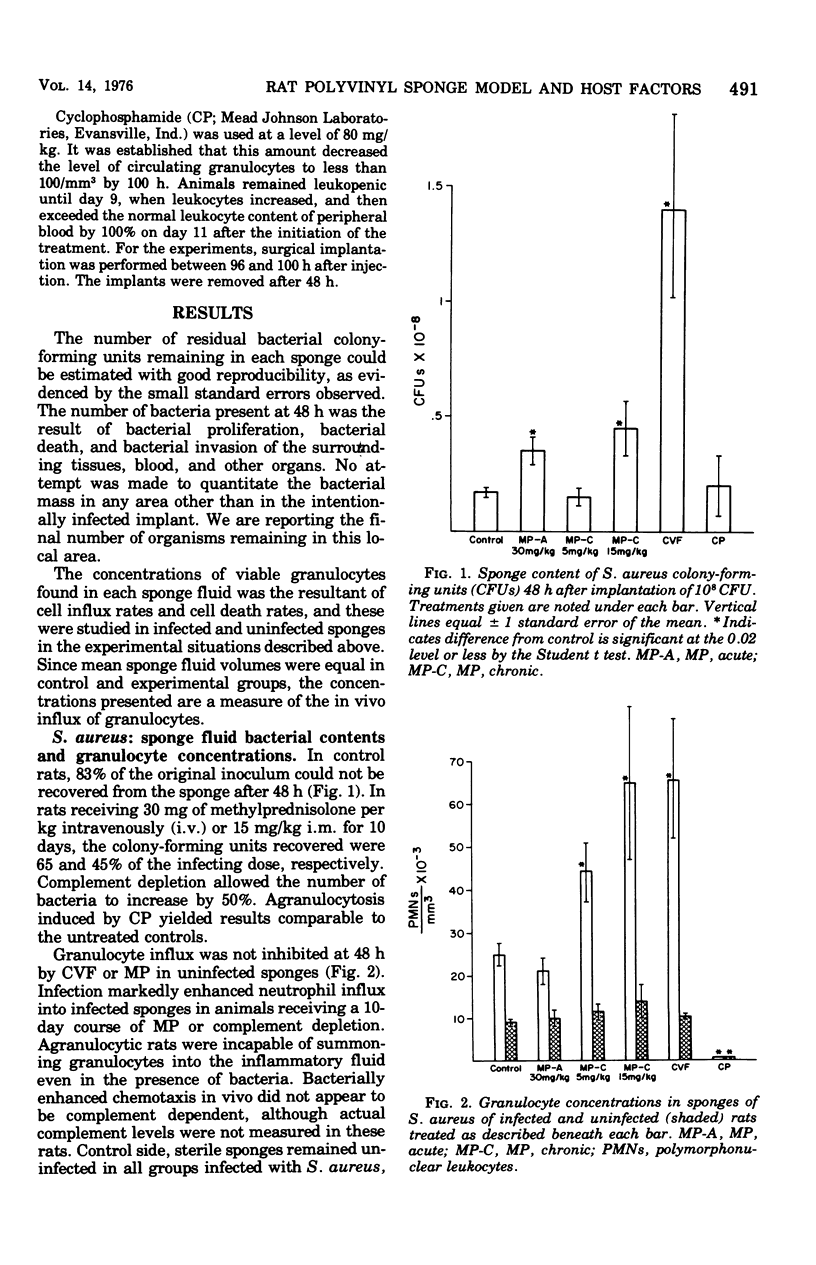
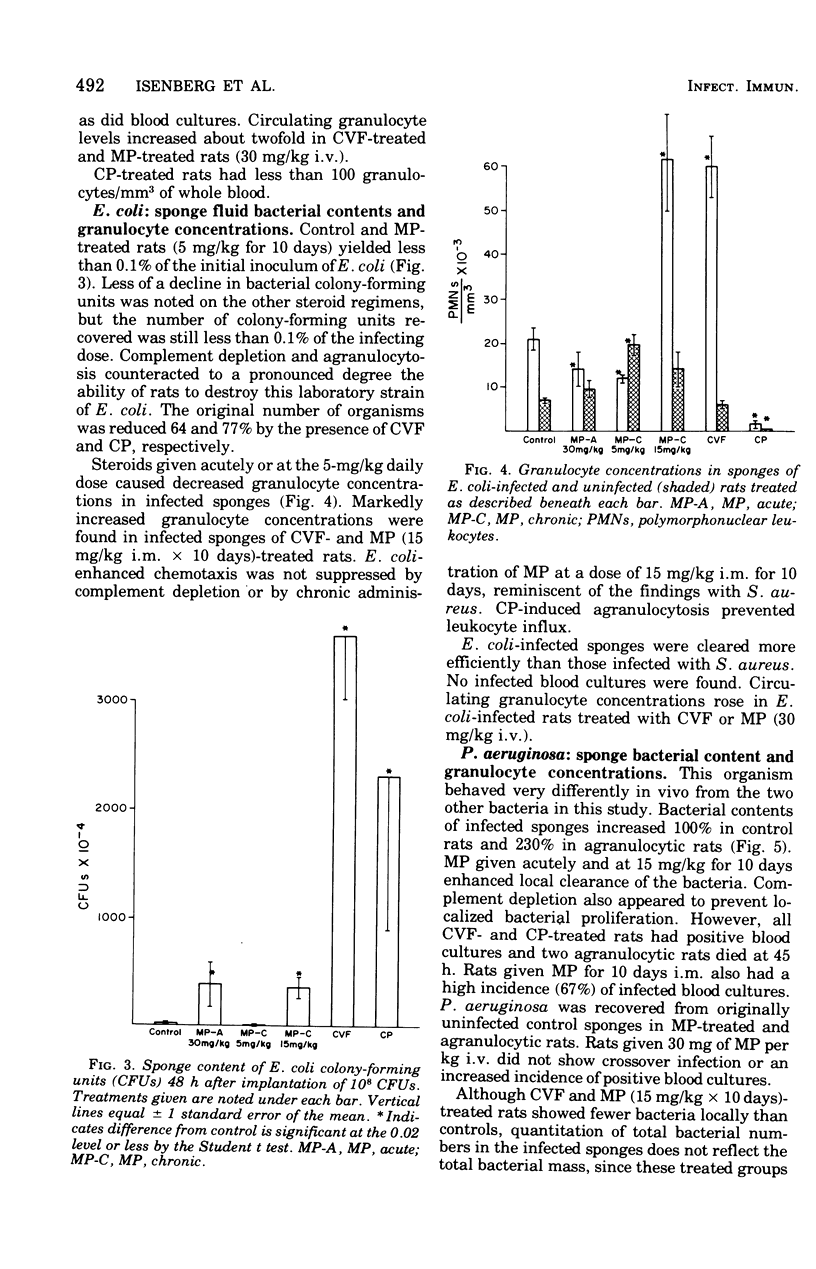
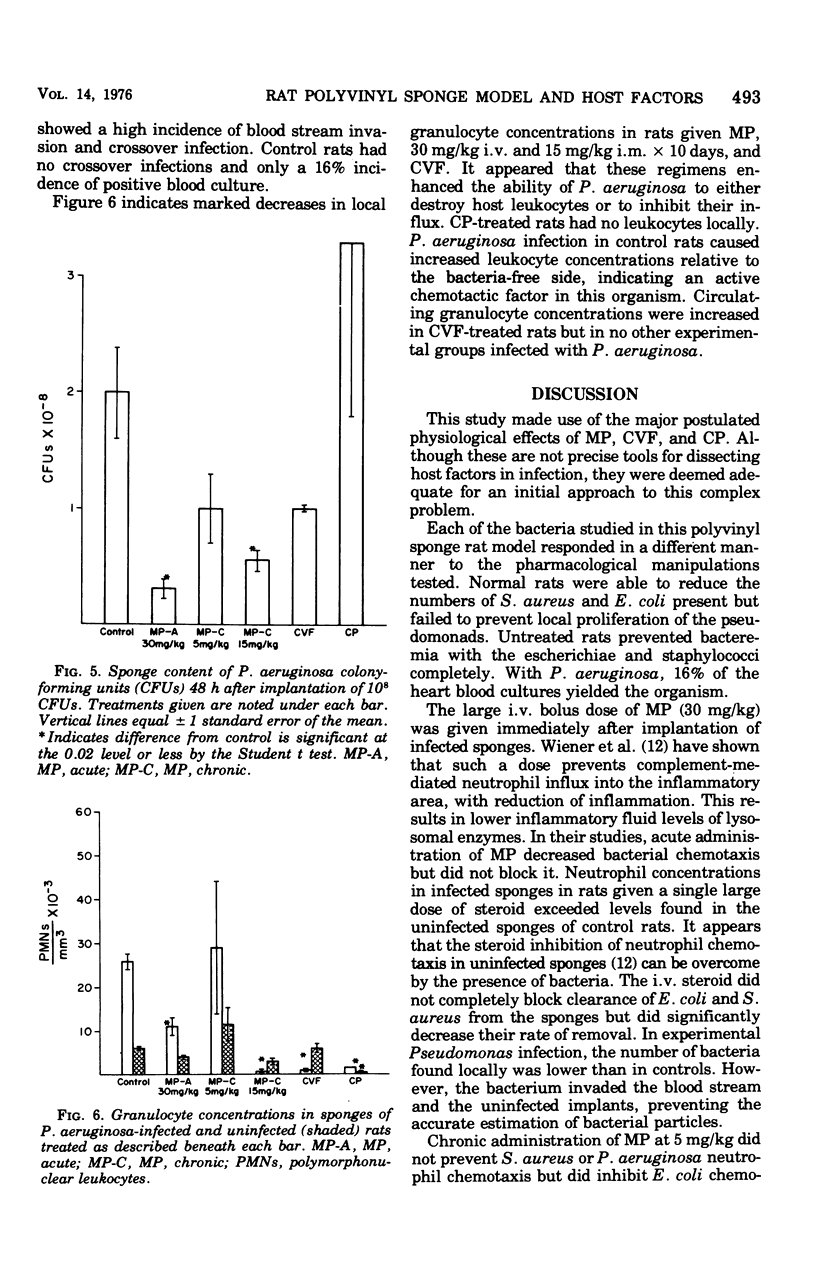
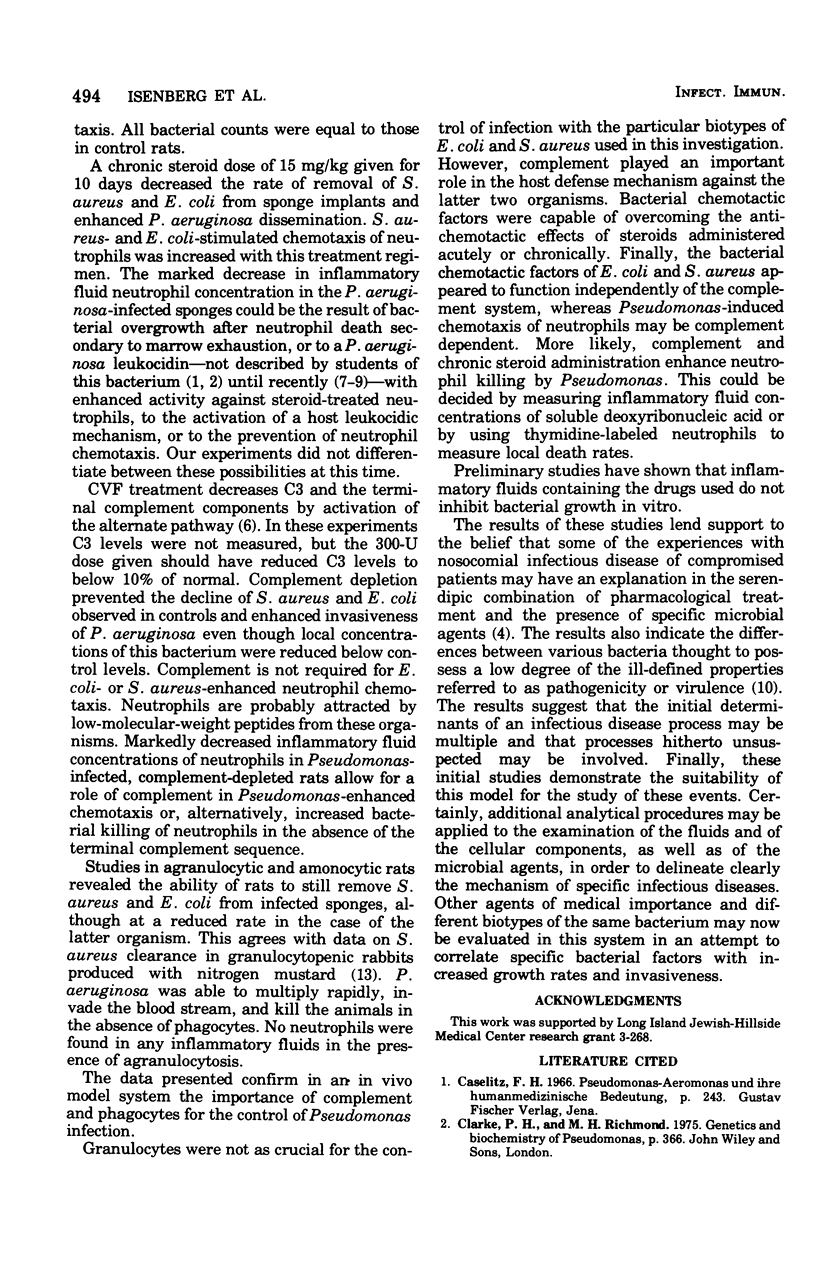
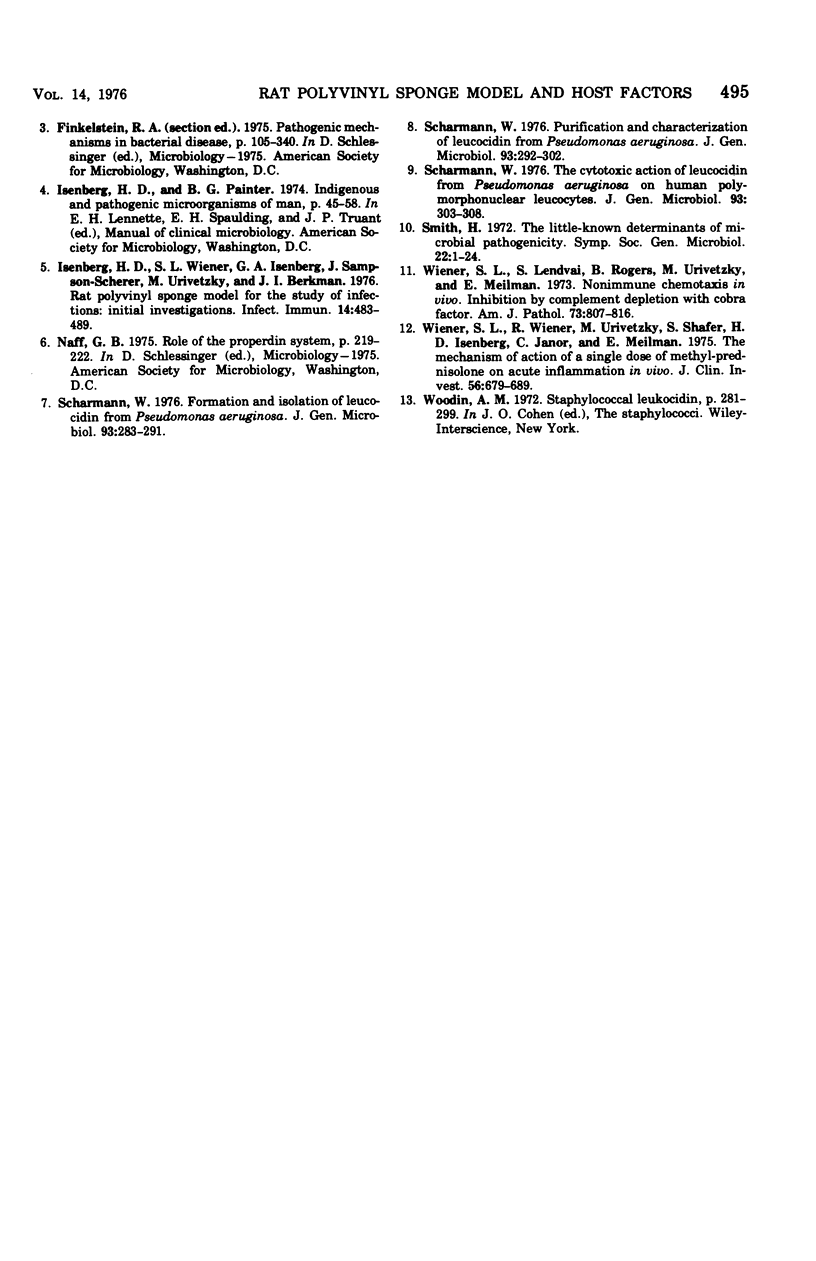
Selected References
These references are in PubMed. This may not be the complete list of references from this article.
- Isenberg H. D., Wiener S. L., Isenberg G. A., Sampson-Scherer J., Urivetzky M., Berkman J. I. Rat polyvinyl sponge model for the study of infections: initial investigations. Infect Immun. 1976 Aug;14(2):483–489. doi: 10.1128/iai.14.2.483-489.1976. [DOI] [PMC free article] [PubMed] [Google Scholar]
- Scharmann W. Formation and isolation of leucocidin from Pseudomonas aeruginosa. J Gen Microbiol. 1976 Apr;93(2):283–291. doi: 10.1099/00221287-93-2-283. [DOI] [PubMed] [Google Scholar]
- Scharmann W., Jacob F., Porstendörfer J. The cytotoxic action of leucocidan from Pseudomonas aeruginosa on human polymorphonuclear leucocytes. J Gen Microbiol. 1976 Apr;93(2):303–308. doi: 10.1099/00221287-93-2-303. [DOI] [PubMed] [Google Scholar]
- Scharmann W. Purification and characterization of leucocidin from Pseudomonas aeruginosa. J Gen Microbiol. 1976 Apr;93(2):292–302. doi: 10.1099/00221287-93-2-292. [DOI] [PubMed] [Google Scholar]
- Wiener S. L., Wiener R., Urivetzky M., Shafer S., Isenberg H. D., Janov C., Meilman E. The mechanism of action of a single dose of methylprednisolone on acute inflammation in vivo. J Clin Invest. 1975 Sep;56(3):679–689. doi: 10.1172/JCI108138. [DOI] [PMC free article] [PubMed] [Google Scholar]
- Wiener S., Lendvai S., Rogers B., Urivetzky M., Meilman E. Nonimmune chemotaxis in vivo: inhibition by complement depletion with cobra factor. Am J Pathol. 1973 Dec;73(3):807–816. [PMC free article] [PubMed] [Google Scholar]


